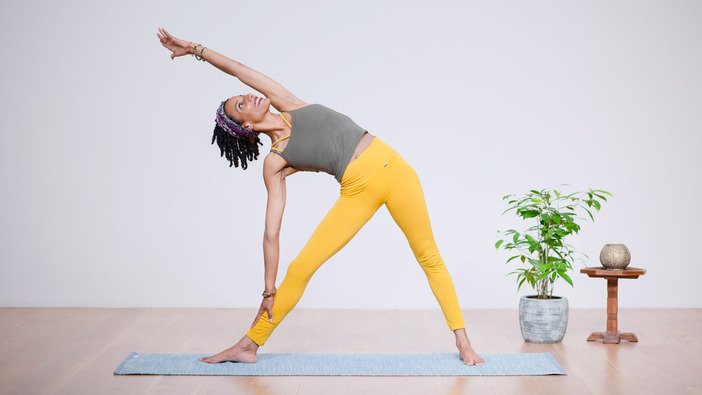The less effort you use, the faster and more powerful you’ll become – Bruce Lee.
From Patanjali’s yoga sutras, we learn about sthira (effort) and sukha (surrender). Sutra 2.46, sthira sukham asanam, means “posture (asana) should be steady (sthira) and comfortable (sukha).” Though originally referring to seated meditation, this idea applies to all modern yoga poses. Simply put, the goal is to create a physical practice free from aches, pain, and restlessness so the practitioner can focus on the mind and breath.
There are many ways to help each of us deal with and release our aches, pains, and anxieties. Since the core is the center of the body, strengthening it can help many of us become stronger, reducing discomfort and worry. A strong core builds confidence (sthira) and ease (sukha), especially when working on difficult yoga poses.
What is the physical core?
While most agree a strong core is better than a weak one, the exact definition isn’t always clear. Some say the core includes only the front muscles—like the rectus abdominis and obliques. Others include muscles in the front, back, and sides of the midsection, such as the pelvic floor, transverse abdominis, erector spinae, and latissimus dorsi. In yoga, a strong core improves posture and balance, helping practitioners feel more confident and at ease in challenging poses.
How do you strengthen your core?
Luckily, every yoga pose works the core because each one requires full-body awareness and engagement. But some poses demand more core strength—like vasisthasana (side plank), where a strong core lifts the body and lengthens the spine. Without it, weight shifts to the shoulder, arm, and wrist, which can cause pain or injury. Plus, a strong core makes breathing easier and reduces lower back pain.
Which poses specifically strengthen the core?
Core-focused poses include navasana (boat pose), chaturanga dandasana (four-limbed staff pose), and bakasana (crane pose). While this article focuses on the physical core, remember yoga is a mind-and-body practice. A strong mental core is just as important for confidence and ease in difficult poses. For example, utkatasana (chair pose) may feel more physically demanding, while sukhasana (easy pose) can be more mentally challenging.
A strong core brings ease to every pose. Over time, building this strength helps you find steadiness and comfort in your practice—both on and off the mat—transforming how you do yoga. Wishing you all the core strength you need to focus on your mind and breath.
